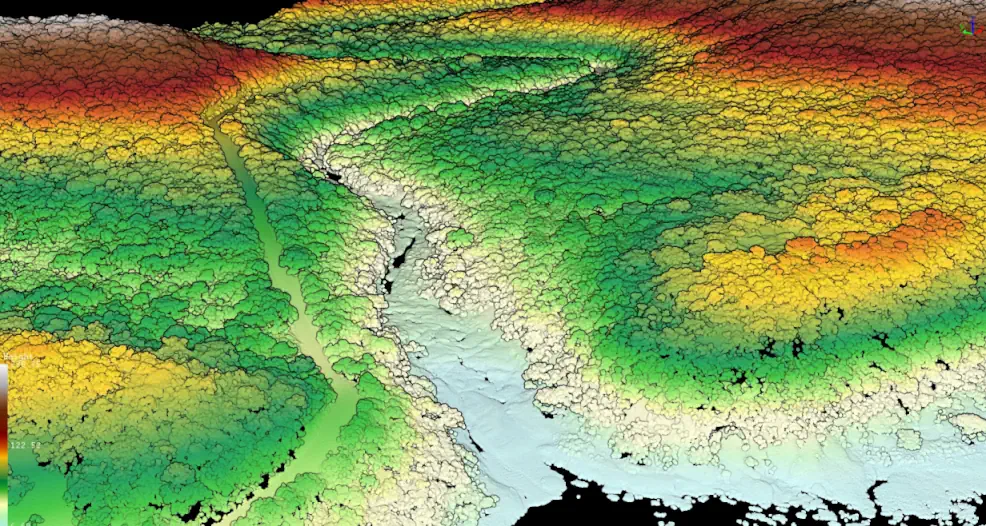At the core of the LiDAR revolution lies its ability to emit laser pulses that can penetrate through vegetation, thus capturing ground levels with pinpoint accuracy. In contrast, photogrammetry relies on capturing images from aerial platforms, often leading to inaccuracies due to the obstruction posed by vegetation canopies. The inherent limitation of photogrammetry in inferring terrain solely from above the vegetation poses significant challenges in achieving precise results.
Unveiling the Veiled Terrain: LiDAR’s Superiority Shines Through
When it comes to conducting detailed surveys in areas densely populated with vegetation, LiDAR emerges as the undisputed champion. By virtue of its laser pulses that are adept at penetrating through foliage, LiDAR can reveal the true ground levels that lie beneath the canopy, offering an unparalleled level of accuracy and reliability. This is a monumental leap forward compared to traditional photogrammetric methods that often fall short in capturing the complete picture of the terrain beneath the vegetation cover.
Why do photogrammetric methods struggle in areas of dense vegetation?
At the heart of it, traditional photogrammetry relies on images taken from a camera that are used in a triangulation calculation that determines its position in space as well as to ascertain its internal distortions and dimensions. While this is can produce a strong 3 dimensional model of a scene, it does have the very problematic limitation of that it can only render what the camera “sees”. Thus, if the camera can only see the tops of tree canopy (which is a vast majority of all cases), this is the maximum depth of field the system is capable of measuring.
Figure 1
In the cross section image above (Figure 1), the yellow points are from a photogrammetry dataset while the points in brown are from a LiDAR scan over the same area. As can be clearly seen, the photogrammetry points could not “see” into the vegetation canopy and are positioned well above the terrain or ground. Figure 1a is a further example.
Figure 1a
Figure 2
In Figure 2, the orthomosaic shows very dense vegetation covering the terrain with a yellow profile of cross section line. The profile area in below shows a photogrammetry pointcloud in blue while the LiDAR scan is given in red. In this instance, only the points classified as “Ground” are shown to highlight the different results. At the indicated location, a dip of 7.8m is missing from the photogrammetry dataset with a variable offset of ~3 to 4m above ground.
Figure 3
Figure 3 shows a similar trend of the photogrammetry derived pointcloud “hovering” above the actual terrain with no vegetation penetration.
How does this lack of vegetation penetration affect DTM or contour production?
The simple answer here is that models that areas generated from photogrammetric methods can not be use with high certainty in densely vegetated areas. It can be used in open areas and isolated vegetation outcrops simply removed or interpolated over, there is no guarantee that this truly represents the terrain underneath. The effect of attempting to survey a terrain such as the given example in the figures above will generate meaningless sub-datasets such as DTM and contours.
Contours generated from LiDAR
Contours generated from photogrammetry
In conclusion, the use of LiDAR technology is far superior to that of the older technology used in image-only photogrammetry. While these may be more affordable methods to undertake data collection for DTM or contour production, the end results are far from being accurate and offer a distorted representation of the terrain and can cause significant imbalances to downstream calculations by the client.
Discover more from sUAS News
Subscribe to get the latest posts sent to your email.

